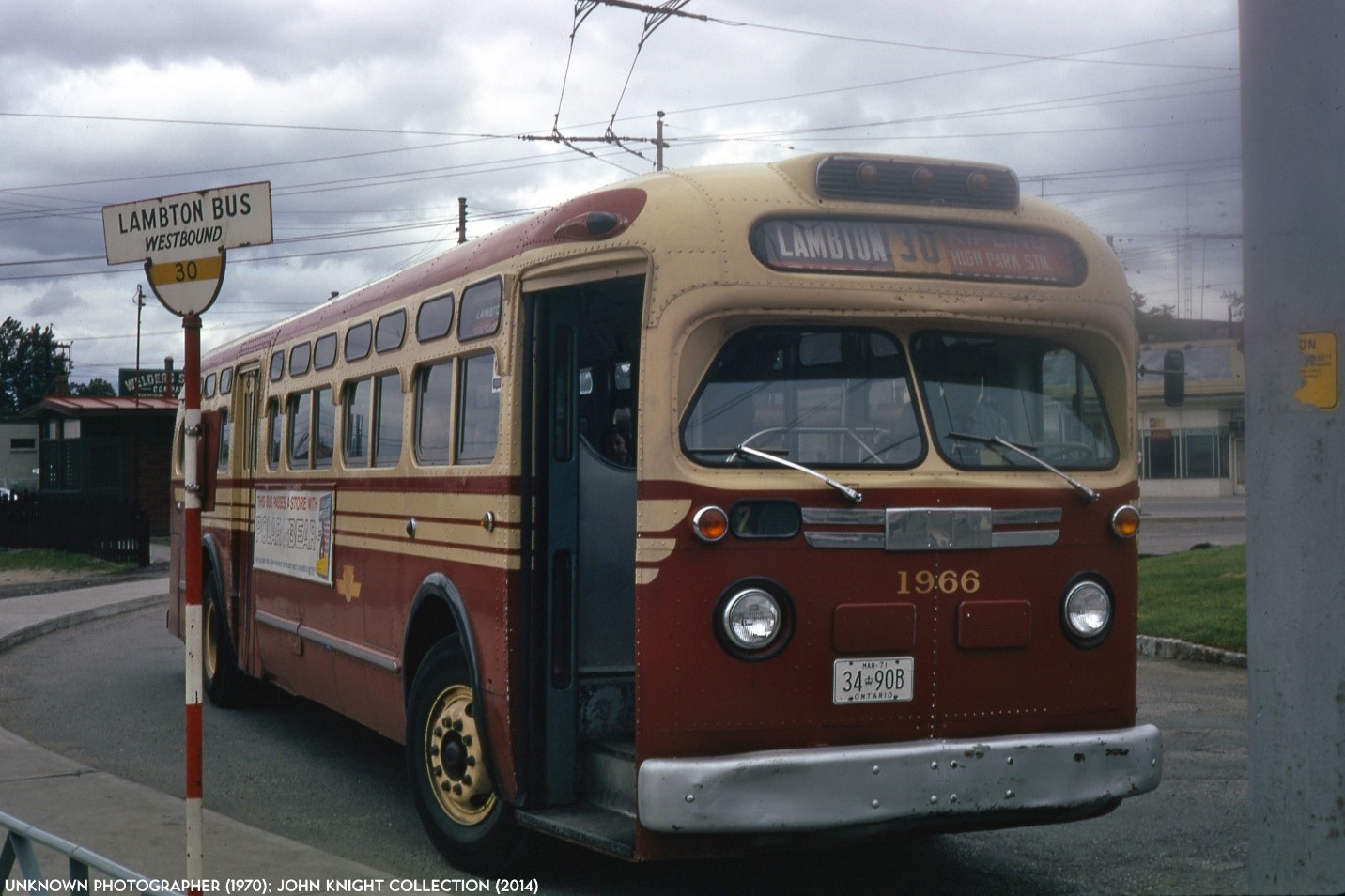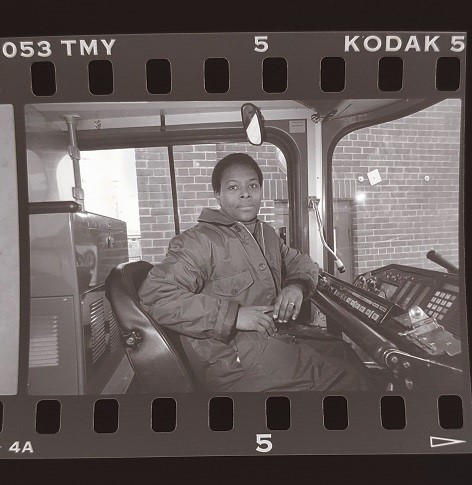Women’s History Month 2024
October is Women’s History Month, a time to celebrate and commemorate the contributions of all individuals who identify as women throughout the history of the TTC.
Learn more as we explore their remarkable journeys!
-
1940s
Did you know that women played a groundbreaking role at the TTC during WWII?
In the early days, women were primarily in clerical roles. But in 1942, as many men went off to war, women stepped up as bus and streetcar operators and mechanics. Their contributions were pivotal during a challenging time, though many were later laid off when the men returned.
In 1943, Ruth Martin became one of the first woman bus operators at the TTC, taking on a role that was both groundbreaking and challenging.

Image Reference:
City of Toronto Archives/TTC Fonds 16, Series 71, Item 14472
First three women bus drivers to qualify with the Toronto Transportation Commission Mrs. McCutcheon, Mrs. Wilkinson, and Mrs. Martin, August 5, 1943 -
1950s and 1960s
Like at many organizations, women in “non-traditional” roles were laid off when men returned from the war – but this was short lived at the TTC. By the late 40s and 50s, individuals who identified as women were hired into the Rapid Transit Department as engineers and architects to help develop the TTC's subway system.

Image Reference:
City of Toronto Archives/TTC Series 2166, File 78, Item 4
D. Souter, C. Rock, Louise Arnott, C. Calderbank examining plans, November 1944Veronica Herczeg, one of TTC’s first woman engineers
Veronica Herczeg was one of the first woman engineers at the TTC, breaking barriers when the subway was still just a dream.
In an era when women engineers were rare, Veronica’s confident “Why should they be?” response to questions about gender difference spoke volumes. Her work wasn’t just groundbreaking—it was history in the making.
Veronica broke the glass ceiling to rise upwards to become a Project Manager, and retired in 1988 after 35 years with the TTC.

Image Reference:
City of Toronto Archives/TTC Fonds 16, Series 2166, File 78, Item 7
The Coupler, April 1972
Veronica Herczeg -
1970s
In 1973 the Commission declared that hiring could no longer be discriminatory based on gender. That made way for Edith Asboth, the TTC’s first permanent full-time woman operator.
Edith’s qualifications were impressive; her background included teaching driver’s education and providing a course on rugged defensive driving to police officers. Nevertheless, she faced sexist comments on the job. A 1973 Globe and Mail article outlined a reporter’s experience of riding with Edith on one of her runs.
“[M]ost [customers] say, ‘isn’t that wonderful,’ when they see a woman bus driver,” but some men would say things like, “Is that allowed?” or they’d comment on her appearance. For example, one man said during the reporter’s ride: “It’s the first woman driver I’ve come across — not bad looking.”
In June of 2012, years after Edith had retired, she was invited back to the TTC for a special tribute and was welcomed with flowers and a TTC operator hat.
 Image sourced from Transit Toronto
Image sourced from Transit Toronto -
1980s and 1990s
Throughout these two decades, women continued to break through the glass ceiling, mostly thanks to the creation of the Equal Opportunity Office and the promotion of women to roles traditionally held by men, such as lead hand or chief instructor.
Kathy Dean, equity trailblazer
Meet a woman who kickstarted real change in the workplace back in the 1980s.
Kathy Dean, the powerhouse who led the TTC’s Equal Opportunity Department. Kathy wasn’t just making moves—she was reshaping the future, increasing TTC’s cultural diversity by 14% in a single year!

Image Reference:
City of Toronto Archives/TTC Fonds 16, Series 879, File 29, Item 174
Changes in Personnel Department - Kathy Dean, Fred L. Stolte, Nancy Littlewood, June 1985Dorothy Dodds, TTC’s first Black woman carhouse operator
In 1991, Dorothy Dodds became the TTC’s first Black woman carhouse operator. Her path to this role, supported by the Women’s Employment Counseling Centre, was a game-changer. Her natural fit in a new role made waves and paved the way for future diverse carhouse operators.

Image Reference:
City of Toronto Archives/TTC Fonds 16, Series 879, File 100, Item 52
Dorothy Dodds in streetcar, April 1992 -
2000s to current day
Since the 2000s, the TTC significantly increased its efforts to support and promote inclusion, diversity and equity. The Commission expanded its gender narrative to use more inclusive language; began commemorating International Women’s Day; created the Diversity and Culture Group (now the People and Culture Group) in 2021 which includes the Racial Equity Office; and has ensured its hiring targets include growing its gender diversity.
-
The future of women and gender diverse individuals at the TTC
The TTC’s commitment to diversity and inclusion is ongoing. We are improving safety, creating opportunities, and better understanding the experiences and needs of our employees who identify as women and gender diverse.
Curious about what’s next for workplace equity? We’re updating our uniform policies and adopting more inclusive language to better support everyone at the TTC. Additionally, we’re exploring opportunities to develop new or expand existing strategies to promote gender equity.
What do we mean when we say gender diverse?
Gender diverse – this is an umbrella term to describe individuals whose gender identity, expression or experience do not conform strictly to biology. It includes those who identify as trans, non-binary, genderfluid, agender and more.